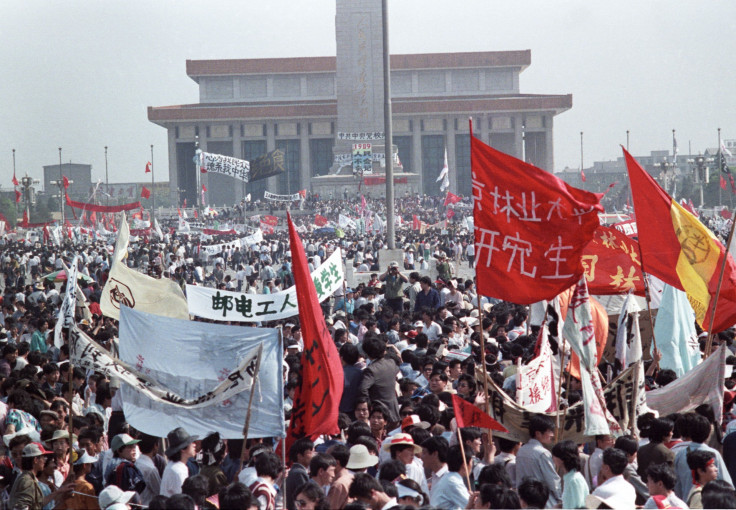What Is Tiananmen Square? Hong Kong Protests Erupt 25 Years After Pro-Democracy Demonstrations In Beijing

The Occupy Central protests that have gripped Hong Kong over the past week are evoking scenes of Beijing’s Tiananmen Square protests 25 years ago. Both demonstrations grew out of pro-democracy sentiment, but the Hong Kong protests, also called the Umbrella Revolution, haven’t been met with the same level of force that Chinese authorities used in Tiananmen Square in 1989, where anywhere from hundreds to thousands of people were killed as the military moved in on protesters. Protesters today, however, have warned of a potential Tiananmen-style response.
Images of police using tear gas and pepper spray to disperse protests in Hong Kong have flooded social media in recent days. The largely peaceful demonstrations are less than a week old, while Tiananmen Square lasted almost two months. Hong Kong's protesters say that they have a strong resolve, even as government officials called for an immediate end to the demonstrations Thursday.
It's unclear what will happen if the activists continue their protests. Reports have indicated that China's government doesn't want to use violence against the demonstrators, but it also published an editorial Wednesday warning of “unimaginable” consequences if the Occupy Central demonstrations continued. Activists said the warning echoed an editorial also published in the People’s Daily, a government-run newspaper, ahead of the Tiananmen Square crackdown.
Powerful photos of tear gas and pepper spray assault on pro-democracy protesters in Hong Kong. http://t.co/wylYuSM1z2 pic.twitter.com/So1TCtkzTd
- Jim Roberts (@nycjim) September 28, 2014Hong Kong police say 87 rounds of tear gas used during protests on Sunday. Live updates: http://t.co/g1Zc84XCrc pic.twitter.com/C6zXqfI1UB
- BBC Breaking News (@BBCBreaking) September 29, 2014
The most iconic image from Tiananmen Square was of a Beijing man who stood in front of a column of tanks on the day the military converged on protesters. Below is a look back at the Tiananmen Square massacre:
Hu Yaobang
This former communist leader viewed as a liberal member of the party died on April 15, 1989. His death spurred thousands of students to congregate in Tiananmen Square in Beijing. The students and pro-democracy activists revered Hu’s advocacy for democratic reforms. Thousands of students remained in Tiananmen Square three days after Hu’s death. Hu’s state funeral on April 22, 1989 saw the crowds in Tiananmen swell to 100,000.
Hunger strikes
About 100 Tiananmen Square protesters started a hunger strike for their cause on May 13, 1989, according to CNN. The hunger strikes eventually drew thousands of participants. On May 19, 1989, the crowd in Tiananmen Square reached 1.2 million people. Chinese leaders pleaded for protesters to disperse, but they resisted. Chinese Premier Li Peng instituted martial law in an effort to calm the protests. The country stopped American media outlets from reporting on the demonstrations on June 1.
June 4
Another name for the Tiananmen Square protests is the June Fourth Incident. June 4, 1989 is the date when the Chinese military used force to clear the square. There are no reliable reports of casualties, but estimates range from hundreds to thousands of protesters killed.
© Copyright IBTimes 2024. All rights reserved.












